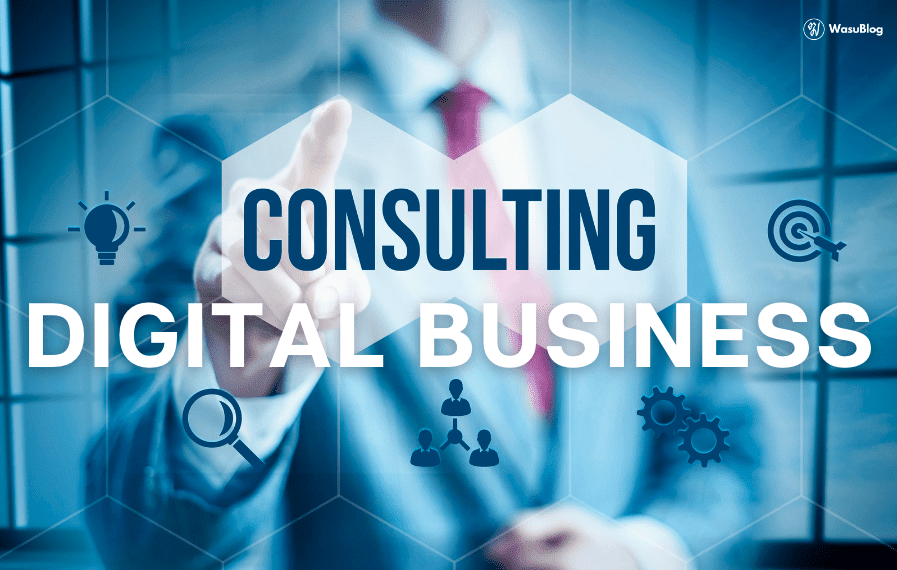Digital Transformation is inevitable. To attain a robust competitive advantage, you must undergo an organizational change process with digital technologies. See also the digital economy and Digital Business Consulting context in smart businesses.
The big question is, “How to move the same people from a traditional economy to a digital economy?” Let’s learn to create digital values, Design a digital ecosystem, and Implementation.
AKA: How to become a Digitalization Consultant.
Table of Contents
Economy Transformation
Short-term to Long-term
- Operational Efficiency: Asset utilization
- New products & services: Data monetization
- Outcome Economy: platform marketplace
- Autonomous, pull economy: End-to-End automation
Or see it from offering categories: Quality -> Customer Integration -> Ecosystem.

VUCA
- Volatility: most companies cannot stay productive
- Uncertainty: small likelihood did come true
- Complexity: cost to develop an app increased by 15-fold in 15 years
- Ambiguity: company valuation up&down
Industry 4.0 is NOW
Why?
It reduces latencies and hence creates business value. In other words, latency is a barrier to agility, and I4.0 is a key factor in getting rid of this barrier.
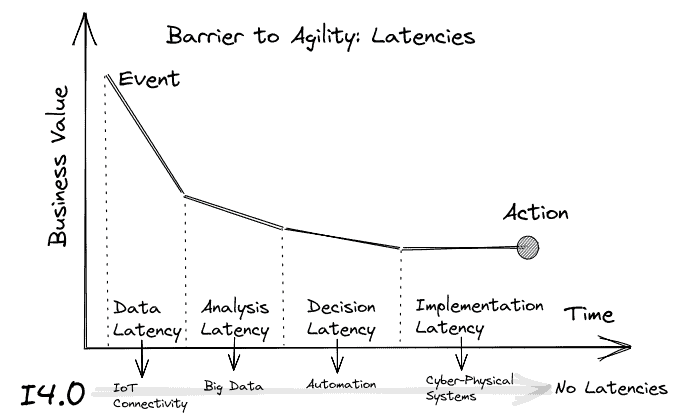
The digitization goal is to increase collaborating productivity between the cyber and physical worlds.
How to Start Industry 4.0
- Connectivity utilizes Digital Twin
- Visibility “What happened?”
- Transparency “How is it related?”
- Predictability “What might happen?”
- Decision capability “Why/What should be done?”
Create Value with Smart Services
Service platforms enable the dynamic combination of digital and physical services toward a network-like business model.
Servitization
More and more value is generated in the service industry.
A service is a time-perishable, intangible experience performed for a customer acting in the role of co-producer
– Fitzsimmons
The common transformation from product to solution provider
- Product
- Product+Service-power
- Service-product power: service as an integral part
- Product+Service
- Complete Solution
- Digital Solution
Q: How to make a win-win situation with a pay-per-use model?
A: Acquire more customers with smaller first-time investments, and maximize customer lifetime value.
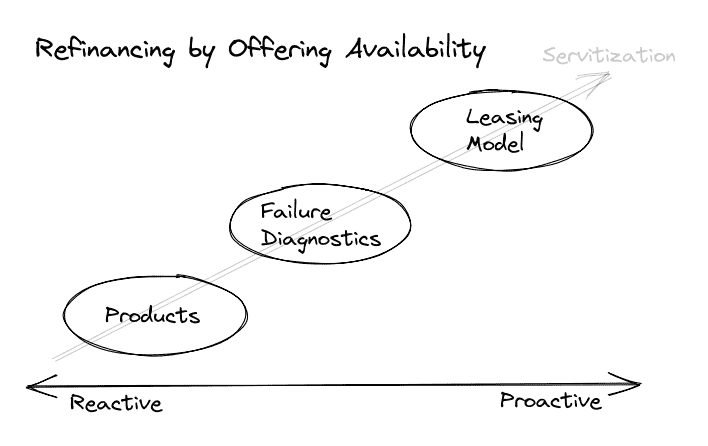
This scheme has a problem with seed funds as the value is co-created with future customers. The overhead might have to be funded with bank loans.
Service-Dominant Logic
A logic views service rather than goods as the focus of economic and social exchange.
- Service = application of competencies for the benefit of another entity
- Goods are seen as appliances for service delivery
2006/10/07 09:05 Bob Lusch, “The Service-Dominant Mindset.” https://coevolving.com/commons/digests/20061007-0905-ssme-lusch
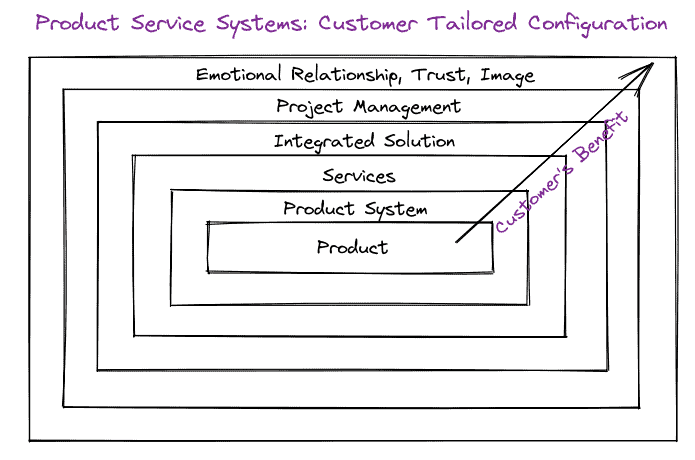
Service Quality
- Assurance
- Reliability
- Responsiveness
- Tangibles
- Empathy
Expected service quality comes from word-of-mouth, personal needs, and experience.
The Gap Model (Zeithamel et al.)
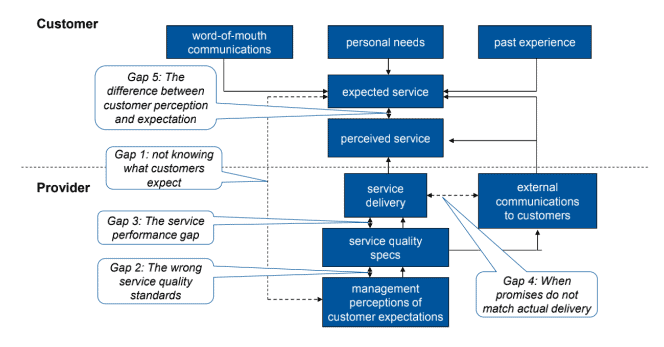
Digital Business Consulting
A dynamic of autonomous actors who coordinate to co-create.
Product -> Value Stream -> Supply Chain -> Ecosystem
Design Digital Platform Business
Design Characteristics
- Customer focus
- Adapt inside the platform
- Use knowledge to forecast
- Aggregation of data
- Network effect
- Scale on zero-cost
Where to find free data for business is going to base on IoT-specific data and interpreted to create value.
Platform Strategies
- Integration Platform
- Layer Platform
- Network Platform
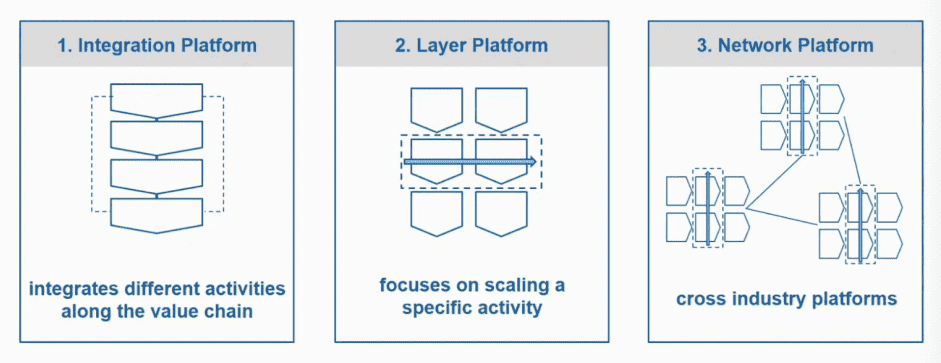
Ecosystem Business Modelling
Coop-competition
1. Replaceability “To what extent can the value contribution be replaced?”
2. Cooperation “How close is the collaborative task?”
3. Competition “How much target market share is overlapping?”
Value proposition
1. Core value
2. Complementary offering
3. Supplying network
Business Transformation Canvas
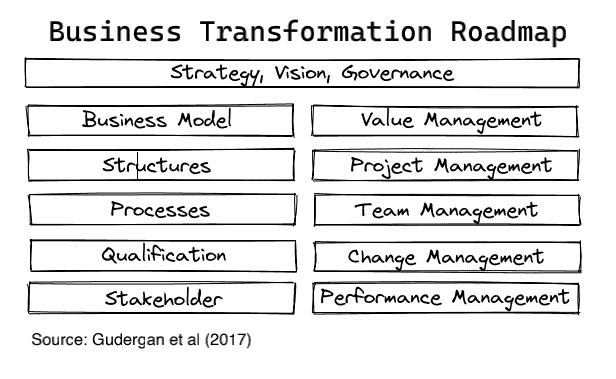
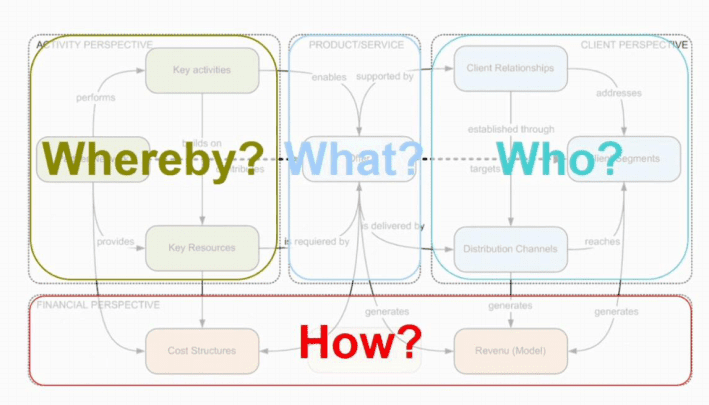
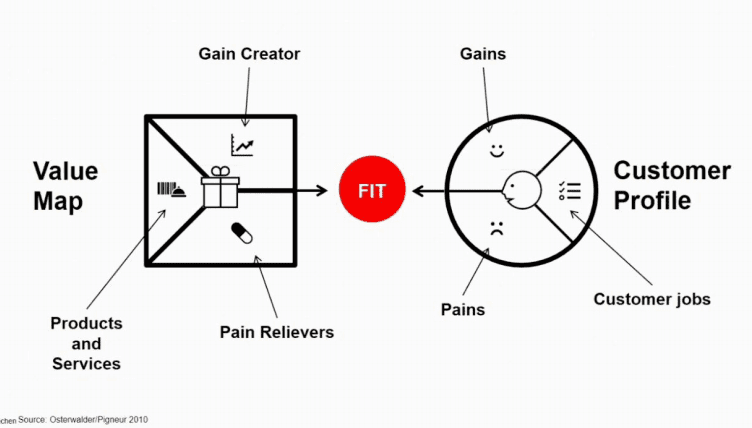
Analyze Ecosystem
- Stakeholder model
- Value flow model
- Layer model
- Value stream model
These are some models that will help you analyze the platform strategies
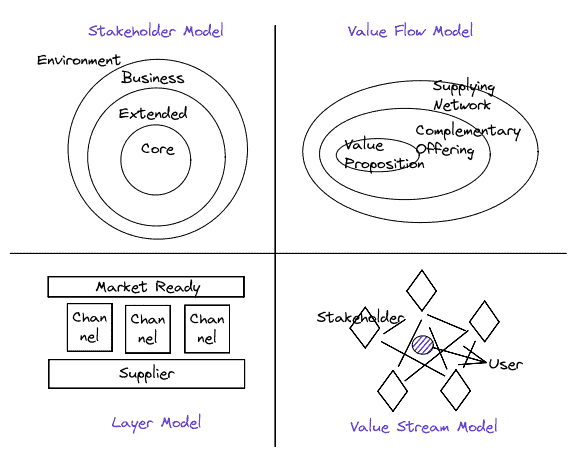
Build a Digital Organization
Leadership in Organization
The structure follows strategy.
Swarm Organization = Holacracy. A distributed power governs it among a self-organizing group rather than a top-down hierarchy.
Select proper structure with market uncertainty and product complexity in mind.
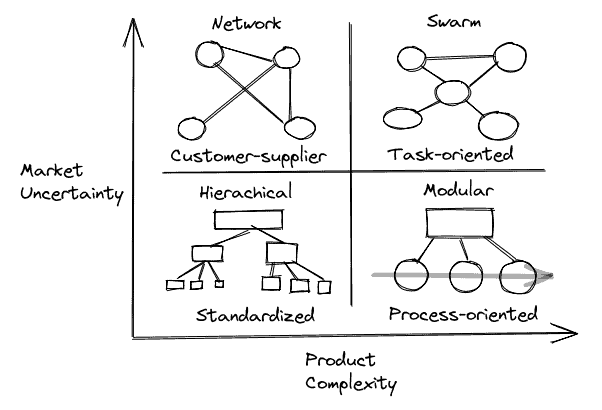
The problem with Chief Digital Officer (CDO) is that BU leaders might not implement it.
Organization Formation
Two common strategies for implementing digitalization
A dual organization with key users: Hierarchy/Existing structure and Network Coalition
+ Existing organization is kept intact, and the new network is built.
– Conflict in the implementation run the risk of working in silos.
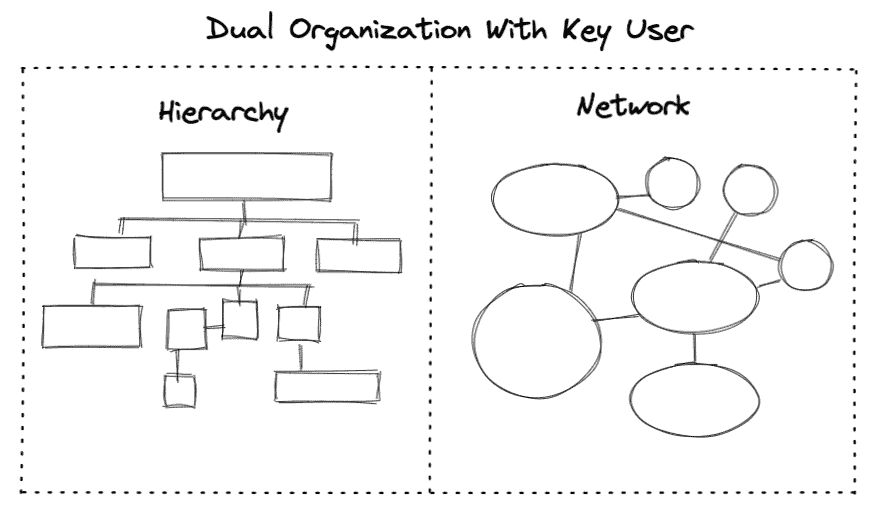
CDO + Board: Introduce the Chief Digital Officer alongside the manager
+ No reorganization in the sense that a new department is not necessary.
– Staff will have to take new additional roles, and learning must be difficult.
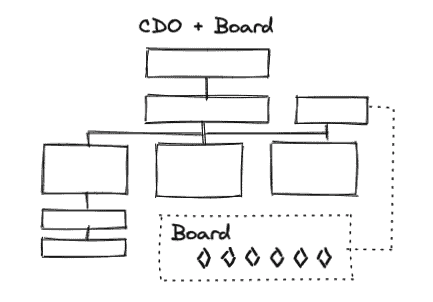
Ambidexterity
= a balance between Exploration and Exploitation.
Exploration: create something new and develop a business model to capture this newly created value
Exploitation: further optimize core competencies to capture more productivity and profit
F. Scott Fitzgerald
The test of first-rate intelligence is the ability to hold two opposed ideas in mind at the same time and still retain the ability to function.
Barriers
- Irreversible Transformation – fundamental pattern change ‘Culture management.’
- Consideration of “Future-proof” design and mismatch implementation
- Dealing with Uncertainty
Realization -> Digital hub, Innovation platform, Lab
- Culture of experimentation: playful, entrepreneurial, fault-tolerant
- Organize creative events: Hackathon, Innovation awards
- Capabilities for experiments: Agile coach, an ad-hoc configuration of technologies
Trust in Digital Leadership
-
Character
- Integrity: Humility, Ethical,
- Intent: Growth mindset, Transparent agenda
-
Competence
- Capabilities: Digital literacy, Skill acquisition
- Results: Track record, Certification
Change Implementation
- Bottom-up: Change at the level of employees
- Top-down: Change planned by top management
- Both directions: Sense-making and sense-giving
- Multiple nuclei: Simultaneously at all levels
Patterns of Participations
- Pseudo-participation: to improve interpersonal relationships
- Social value strategy: to underline the value and needs
- Human resources strategy: to use the knowledge of members
- Authentic participation: to realize values, needs, and knowledge
Conclusion
There are many things to consider to transform your business into a digital one. But it is worth it!
Today, you have learned to create digital values and digital strategic management.
Understand the background of Economy Transformation and realize that Industry 4.0 is happening now. Throughout the chapters, we talked about smart businesses that shift from product-centric to service-centric and how to design such an ecosystem. In the last part, we looked at how to transform our organization so that it is digitalization-ready : )
I hope you now know how to deal with digitalization and even become a digitalization business consultant yourself!
If you need help, get in touch, and I will help you with this great mission!

